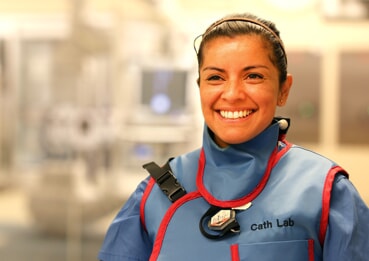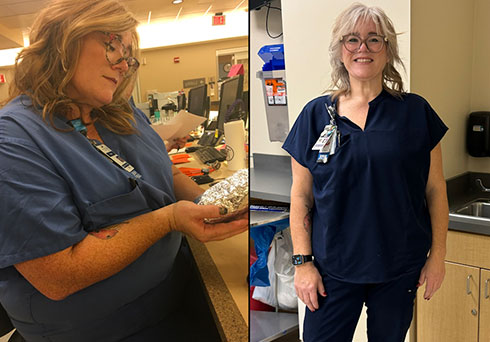Made for more beats
Jan 25, 2021

At Adventist Health Simi Valley, cardiology experts stop heart attacks in their tracks
“You’re having a heart attack.”
Those are the words the emergency room doctor told the middle-aged man as a sharp pain coursed through his chest. He had known the feeling – he’d been through this once before.
“It looks bad,” said cardiologist Dr. Thanh Nguyen. He knew this patient – he’d placed a stent in his heart just three years earlier when another artery was clogged.
“Get a chest X-ray and get him down to the cath lab.”
When heart attacks happen, mere minutes can spell the difference between heart failure or a full recovery, and in some cases, life or death. At Adventist Health Simi Valley’s advanced cardiac catheterization lab, a team of experts work to stop blockages in their tracks.
When people hear about heart procedures, they might think of complex open-heart surgery. That’s not what happens in the cath lab. Instead, skilled cardiologists like Dr. Nguyen perform a minimally-invasive procedure that involves fishing a wire about the diameter of a sewing needle through an artery in the upper thigh and running it to a patient’s heart.
By the time the patient had been wheeled to the cath lab, the team was already waiting for him. When patients come in with a severe heart attack, clearing the blockage is among the most stressful events healthcare professionals can encounter. In this case, the block was in a left anterior descending vessel, referred to informally as the “widow maker” for its low survival rate.
Dr. Nguyen looked to his team.
“Stay calm. It’s just like any other procedure we do, just a little bit faster,” he said. They huddled around the patient and went to work.
For the next few minutes, lights dimmed as X-ray techs Alan Taylor and Michelle Flores injected contrast and saline into the arteries, allowing Dr. Nguyen to detect blockages in overhead monitors.
Within three minutes, Dr. Nguyen located the blockage. Just five minutes later, the team used a Penumbra – a suction device – to clear a clot from the artery.
In total, clearing the blockage and saving that man’s life took just 28 minutes from the moment he came through the ER doors.
“If he didn’t get here when he did, he could have died, and now he’s alive and can enjoy his family and his grandkids,” Taylor said. “It’s the reason why we do what we do.”
Related articles

Tillamook Medical Minute: What to Do Before and After Your Flu Shot
August 31, 2023

Added Energy, Better Health: A Nurse’s Weight-Loss Story
January 17, 2024

Medical Minute: The Importance of Regular Cervical Cancer Screenings and HPV Vaccines
January 13, 2023